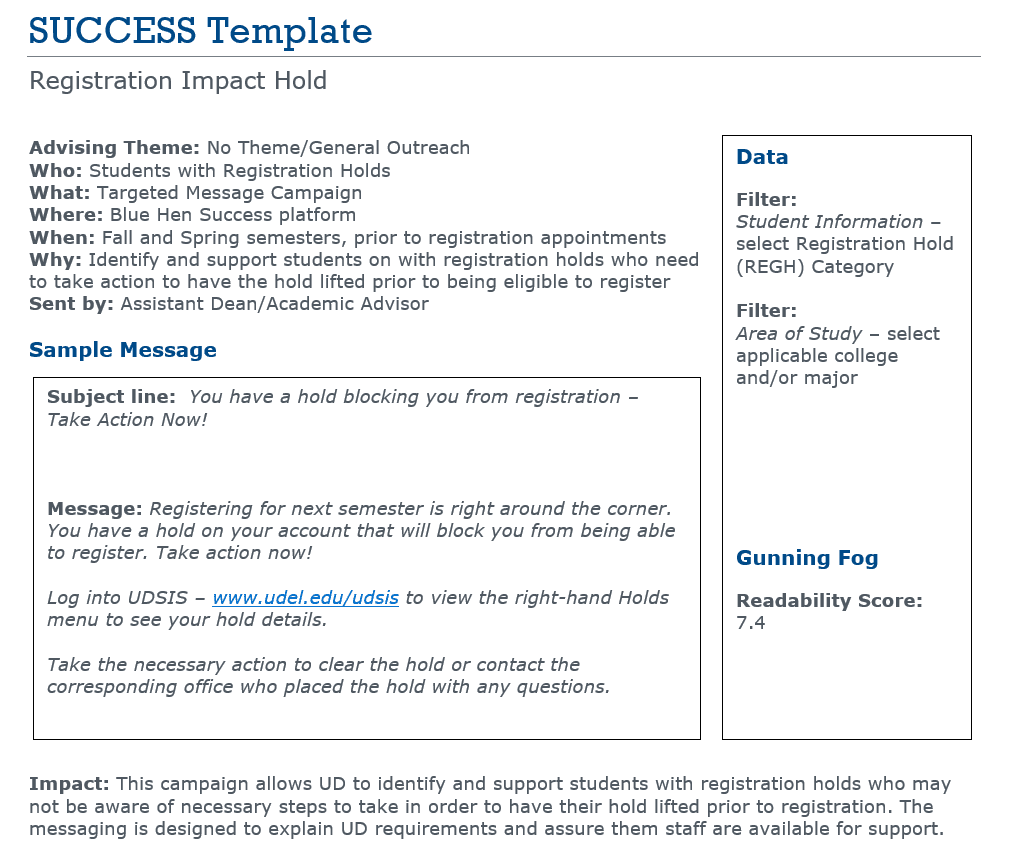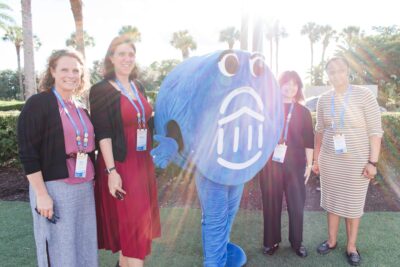70 administrators came together to audit emails. Here’s what they found.
Originally published by Kathleen Escarcha
If you have the sense that students are ignoring your emails, you might be right. More than 50% of students say they don’t always read emails from their institution or academic department, and nearly 40% don’t always read emails from their advisors, according to a survey from Bowling Green State University.
When students ignore emails, they may not get the course registrations or financial aid they need to graduate on time. To help you craft more effective emails that catch students’ attention, we’re revisiting advice that Naomi Nash, the director of student success initiatives at the University of Delaware, shared with student success leaders in a 2017 EAB webconference.
Nash worked with Lindsay Miars, an expert on advising and student success with EAB’s Navigate, to lead about 70 administrators through an email audit. As a community, attendees brought in samples of emails they sent to students to talk through what was and wasn’t working. They audited the emails for jargon, subject lines, length, and urgency of the messages.
After advisors completed the email audit, the university established an Improving Student Communications Working Group (ISCWG) to continue refining their student communications strategy. In 2017, the university convened the ISCWG-which was comprised of staff from offices across campus, including the registrar’s office, financial aid, student life, and IT-to identify the timing, origin, and content of every email students receive across a semester.
Here are two strategies administrators can borrow to sharpen their student communications strategy based on takeaways from UD’s email content and volume audit.
1. Make email best practices easy to adopt
After the email audit, advisors walked away with ideas of how to craft better messages based on email best practices, but few had the time to implement those strategies, says Nash.
So, Nash and the Student Success Initiatives staff created shareable email templates for advisors. The templates include recommended subject lines, pre-written messages, and context about how the email fits into the institution’s larger goals to support and graduate more students.
0%
of students say they don’t always read emails from their institution or academic department.
The templates also use active language and common words to keep students at the center. “Frontline staff are sending lengthy, formal emails to students accustomed to tweets,” Miars pointed out in the presentation.

Effective email language is clear and direct, explained Miars. Advisors and administrators should craft emails that focus on the student and their ambitions rather than general information, she added. This approach “appeals more directly to the student’s motivation.”
“Students are more likely to respond to messages that focus on them and their goals, rather than on the University’s rules and policies,” says Nash. “These are simple changes that anyone-advisors, professors, administrators-can use to make their emails more readable and effective.”
Clearly state target audience, purpose, and time frame.
Outline steps to filter caseload in Navigate for the right audience.
Place the message in context of larger strategy and goals.
LEARN HOW TO AUDIT COMMUNICATIONS IN A CROSS-DEPARTMENT WORKSHOP
2. Visualize your email strategy
During the ISCWG working session, administrators mapped out every email they typically send to students over the course of a semester. The results were surprising.
“While we all know that students get a lot of emails, seeing the huge volume of them all piled up in September was really eye-opening,” Sheri Rodriguez, the then-assistant dean in the College of Arts and Sciences, told UDaily. “Students are sorting through all of those messages, trying to figure out who is sending them, which ones are essential and which ones can be put off until later or even ignored,” says Rodriguez.
“These are simple changes that anyone-advisors, professors, administrators-can use to make their emails more readable and effective.”
Naomi Nash Director of Student Success Initiatives at the University of Delaware
A large volume of emails can easily overwhelm first-year students who are adjusting to university life or students who need specific information about academics or finances, reports UDaily.
THE 10 MOST COMMON STUDENT COMMUNICATION MISTAKES-AND 3 TOOLS TO FIX THEM
Next Steps
“Ultimately, we plan to share all of this research with everyone at UD who wants to improve their communications with students, whether that’s faculty, staff or administration,” said Mike Chalmers, the senior director of leadership communications.
While creating emails based on best practices is a good first step, the university continues to explore other innovative ways to use Navigate, which UD has branded as Blue Hen Success, to proactively outreach and support its students. They continue to edit messages, refine targeted populations for outreach, and adjust the timing of certain messages in attempts to increase impact, adds Nash.
Sources: UDaily staff, UDaily, 2/22/18; Miars, EAB On-Demand Webconference, 7/31/17
More Blogs

EAB Wrapped 2025: A year of reckoning—and reinvention—in higher ed

Four signs it’s time to break up with your student CRM
